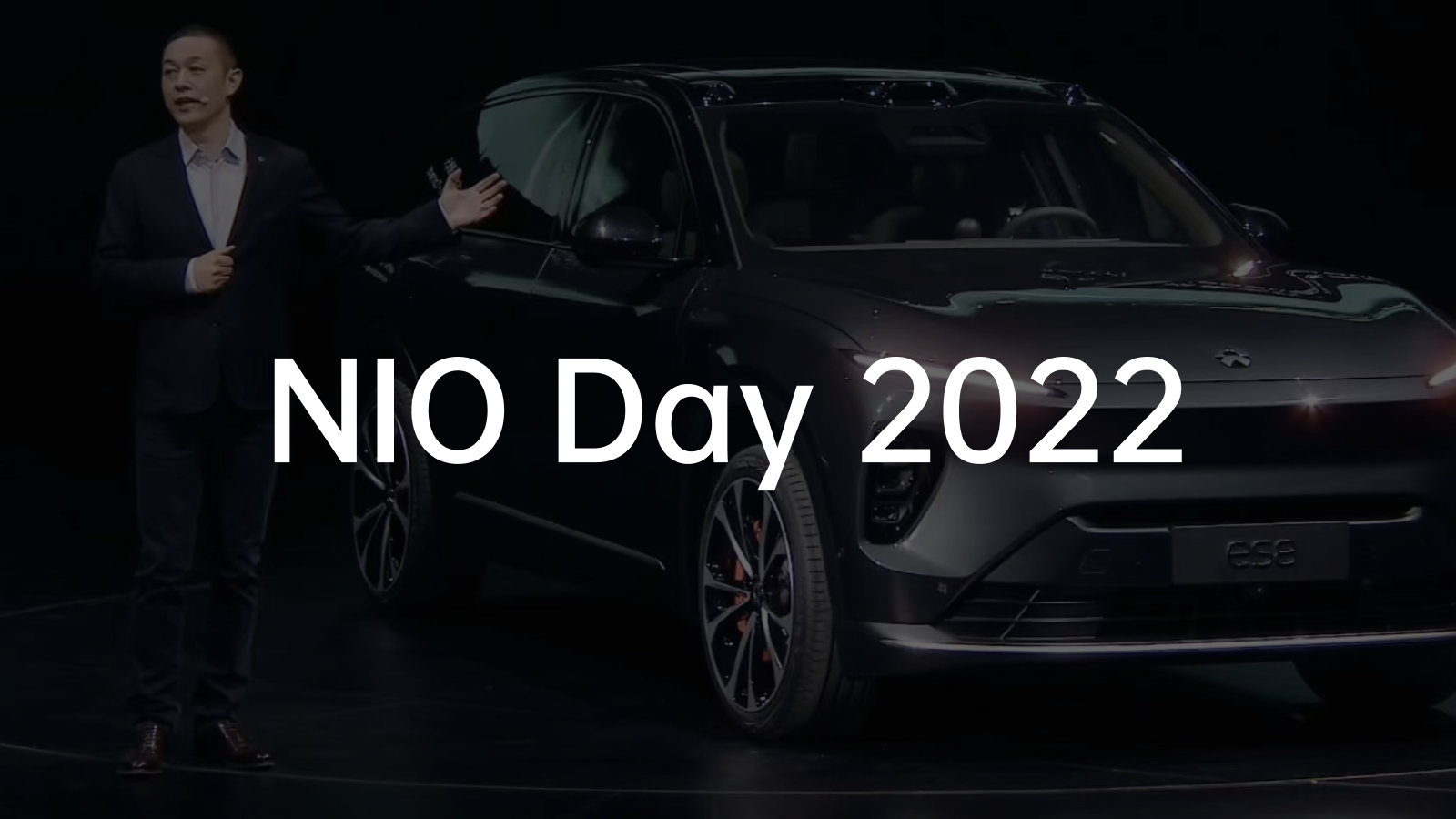As a “chosen worker” who has never experienced sunshine, I was initially hesitant about attending this year’s NIO Day for Christmas.
Unfortunately, NIO knows how to lure people in. First, they announced that this year’s special guest would be Li Ronghao; then they released a promotional video for their third-generation battery swap station in a sly manner. I could handle these, but when I saw the teaser image of the new car with a raised spoiler below, I couldn’t resist any longer.
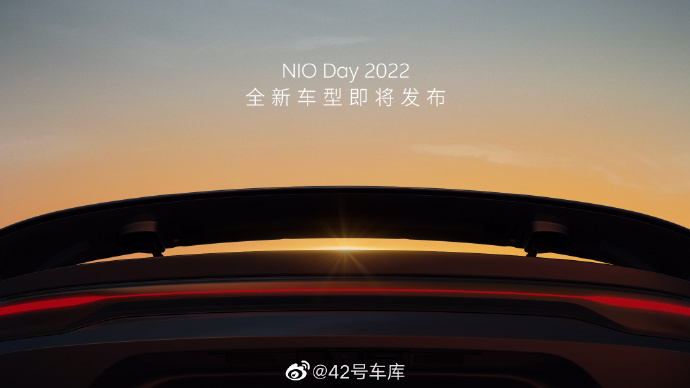
As a picky Coupe SUV enthusiast, besides the Cayenne Coupe, I haven’t found a second design that suits my taste. At that time, spy shots of the EC7 were everywhere, and NIO’s teaser image was practically telling you: besides the ES8, we’re releasing the EC7 at NIO Day, wouldn’t you come take a look?
I’m sorry, I couldn’t resist the temptation.
Two new cars with distinct styles
What a sleek silhouette!
The EC7 has released the prices for three versions this time, compared with the ES7, the 75/100 kWh versions of the EC7 are 20,000 yuan and 30,000 yuan more expensive, and the first launch version is 30,000 yuan more expensive:
-
The 75 kWh version is priced at 488,000 yuan, with BaaS at 418,000 yuan, and a monthly rental fee of 980 yuan;
-
The 100 kWh version is priced at 546,000 yuan, with BaaS at 418,000 yuan, and a monthly rental fee of 1,680 yuan;
-
The first launch version is priced at 578,000 yuan, with Baas at 450,000 yuan, and a monthly rental fee of 1,680 yuan.


The EC7 still follows the unified battery pack specification under the battery swap system. The 75 kWh version has a 5 km greater range than the ES7; and the 100 kWh version has a 15 km greater range than ES7:– The 75 kWh version of CLTC has a range of 490 km.
- The 100 kWh version of CLTC has a range of 635 km.
- The 150 kWh version of CLTC has a range of 940 km.
Unfortunately, Li Bin did not reveal too many details about the 150 kWh battery pack during this NIO Day, only stating that it is “in the final stage of development.” However, according to previous news, the 150 kWh semi-solid-state battery pack is likely to debut in the third quarter of next year.
However, when EC7 appeared on stage, I knew that this year’s NIO Day was worth it: this real car posture completely conforms to my imagination. For the appearance of EC7, we abandon tradition a bit, because tasting a Coupe SUV from the posture is the right way to open it.
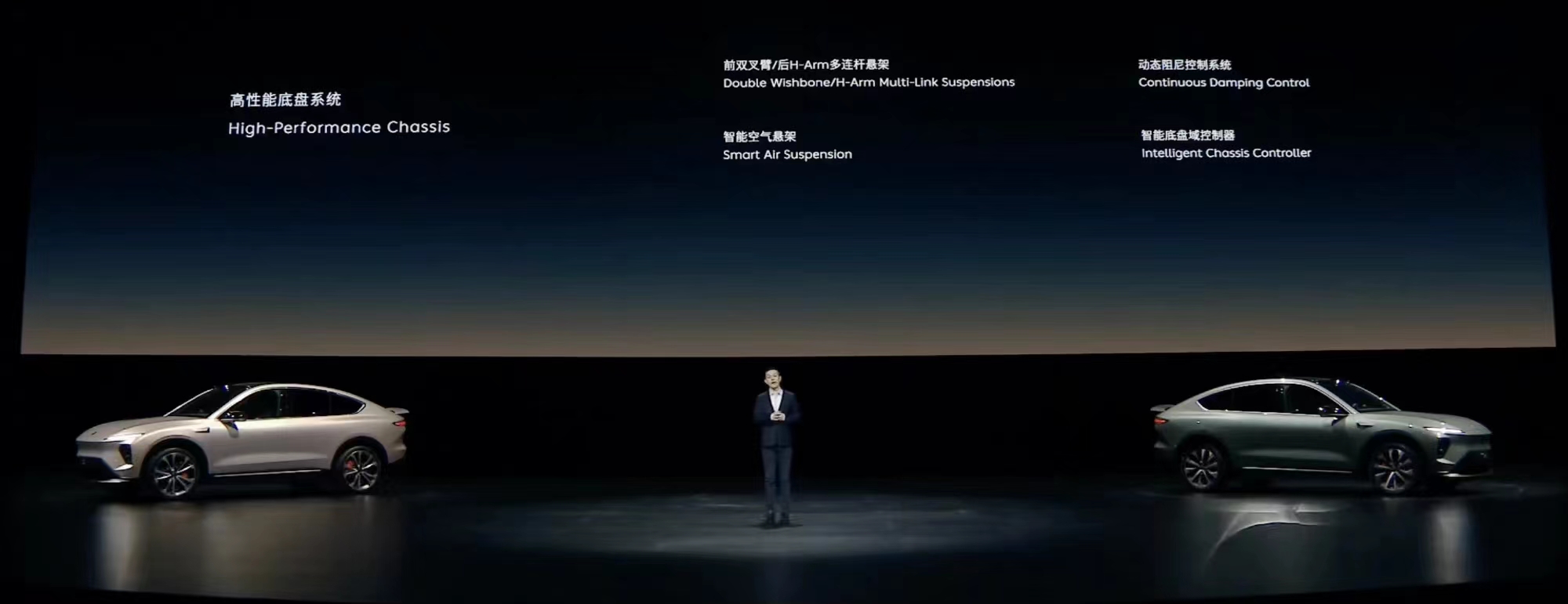

For Coupe SUVs, it can be said that “it is both won and lost with a sloping rear end.” If it is too slippery, the entire car looks like a two-door sports car on stilts, which is out of place; if the lines start to slope downward only at the rear end, the whole car will look bloated, like carrying a cumbersome butt. Therefore, to embody the sports and power of a good Coupe SUV, “how to design a sloping rear end” is a big question.
On EC7, you will see that the tangent lines that rise in the front half and fall in the rear half meet in front of the B-pillar, giving the front half a fierce sense of momentum and the rear half a stable and solid sense of power.
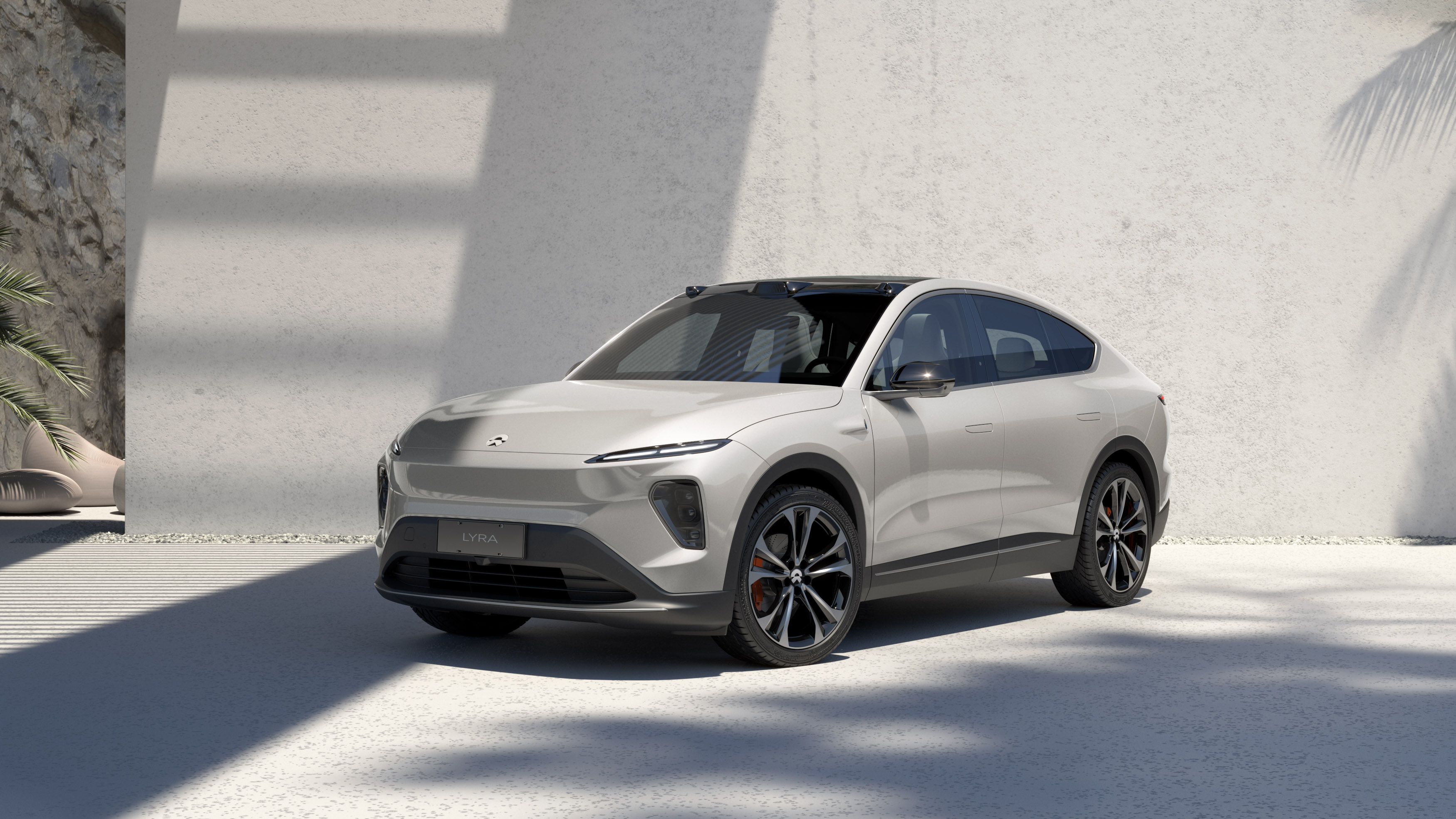
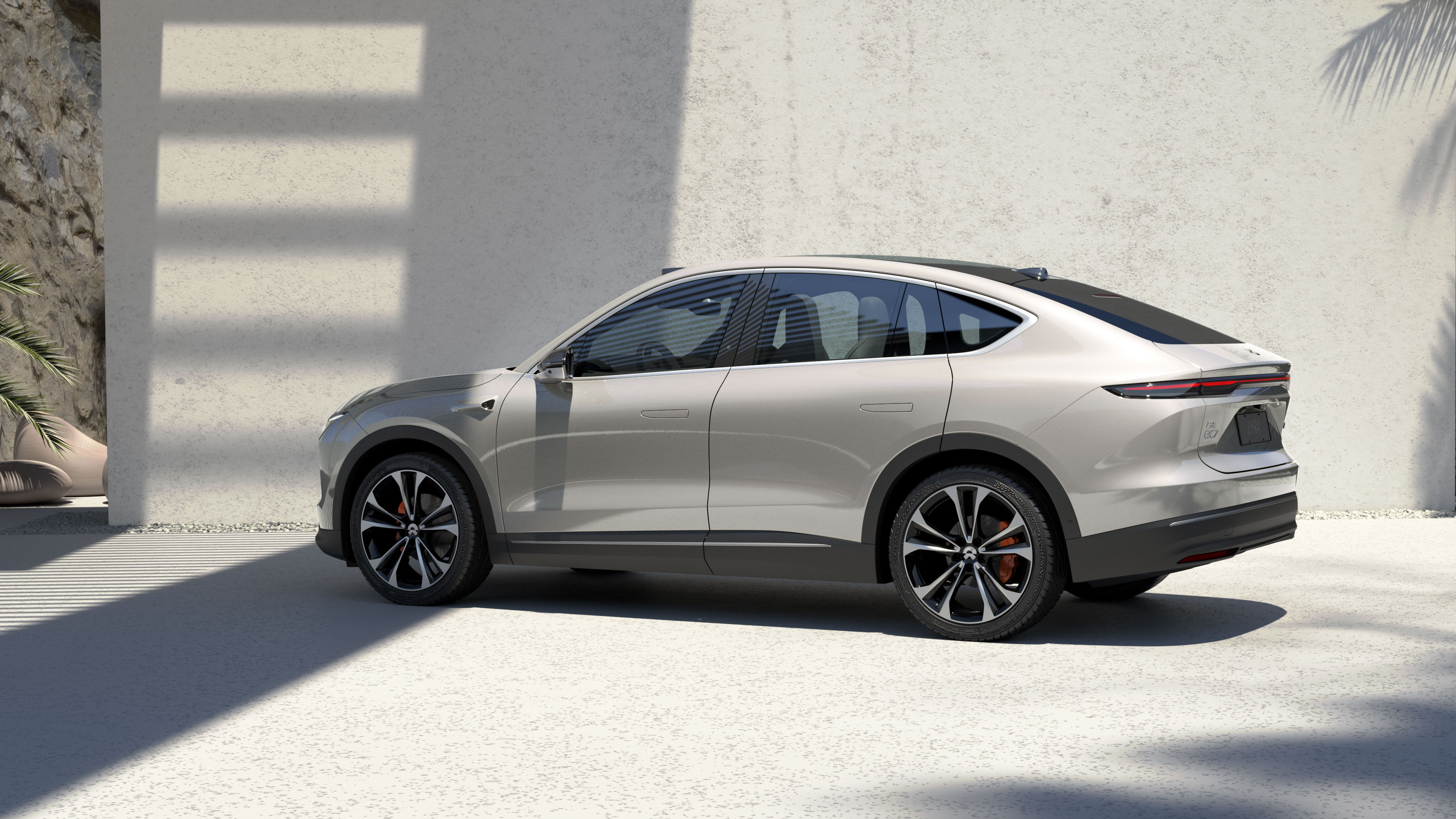 Two aspects add to the perfect posture of the EC7: the shoulder line and the rear overhang. The slightly upward shoulder line is wider than the roof, avoiding the problem of Coupe SUV being top-heavy; the EC7, positioned as a 5-seater, can be a little whimsical and extend the length of the rear overhang a bit for a perfect posture at the rear.
Two aspects add to the perfect posture of the EC7: the shoulder line and the rear overhang. The slightly upward shoulder line is wider than the roof, avoiding the problem of Coupe SUV being top-heavy; the EC7, positioned as a 5-seater, can be a little whimsical and extend the length of the rear overhang a bit for a perfect posture at the rear.
This way, the EC7’s sleek curved lines can be freely stretched and retracted without any abruptness. On the EC6, the square black wheel arches and around, sleek SUV profile did not match, and the EC7 finally replaced the wheel arches with rounded arcs. The EC7’s lateral camera was also moved to the fender and painted in body color.
Unfortunately, the charging port of the EC7 is still in the front, an old problem.
The sleek design also gives the EC7 an outstanding drag coefficient of 0.23. In comparison, the ES7 has a drag coefficient of 0.265, the previous generation EC6 has a drag coefficient of 0.26, and the “big mouse” EQS SUV also has a drag coefficient of 0.26. This shows that the “sacrifice of design for drag” may just be an excuse for lazy design.
Turning back to the front, as a product of the NT 2.0 platform, the all-new X-Bar and the lookout-tower-like sensors of the EC7 are not unfamiliar but subtly concealed within the seemingly familiar design.

The matrix-style headlights are believed to be familiar to everyone: by controlling the opening and closing of individual pixel light sources, the matrix headlights can achieve precise control of the light beam and even play with interesting patterns and characters using pixels. To achieve ADB (adaptive high beam system), the traditional method is similar to that of the Volkswagen ID. Series, which detects the environment and vehicles through the front camera.
The ID. Series has achieved good results, but NIO’s play has gone a step further. We all know that LiDAR obtains information by obtaining reflected light, so it is not affected by external light. NIO integrates LiDAR’s perception ability into the control of ADB, combined with the front camera and millimeter-wave radar, to achieve more precise control of the matrix light source.


And I also boldly predict that in the near future, this headlight will be able to project custom patterns and text through OTA.
Looking at the tail of EC7, the lighting design is also surprising. First of all, the brake light is hidden behind the glass and is not visible when it is not lit. The through-type taillights are similar in style to the ES8 and are different from other NT 2.0 models, making them more sporty.
The most exciting part is this electric lifting small tail wing. For a coupe model, the tail wing is essential like cumin on a barbecue, raisins on a cake, or round ice in whiskey. It is the addition of this small tail wing that has elevated the sporty temperament of the EC7.

This tail wing can not only increase the downforce but also reduce wind resistance. In automatic mode, it is activated when the resistance reduction gear is 80km/h, reducing wind resistance by 4\%; in handling mode, it is activated when the speed is 170km/h to counteract lift. In manual mode, the central control screen provides four adjustable gears: off, resistance reduction, handling, and automatic.
 The interior of EC7 remains consistent with that of ES7, with features including a 10.2-inch dashboard, a 12.8-inch central screen, and a 7.1.4 panoramic sound system, which are all well-known and thus not elaborated on here.
The interior of EC7 remains consistent with that of ES7, with features including a 10.2-inch dashboard, a 12.8-inch central screen, and a 7.1.4 panoramic sound system, which are all well-known and thus not elaborated on here.
The changes in interior detail mostly consist of four aspects. First, EC7 comes equipped with an intelligent dimming panoramic sunroof. Given the soundproofing and thermal insulation effects, the sunroof on the EC7 features double-layered glass, with a thickness of 4.96 mm, and an overall area of 1.94 square meters, making the skylight area 1.23 square meters. Through sensors, the sunroof can automatically adjust transparency between transparent and black-gray, which can also be manually adjusted.
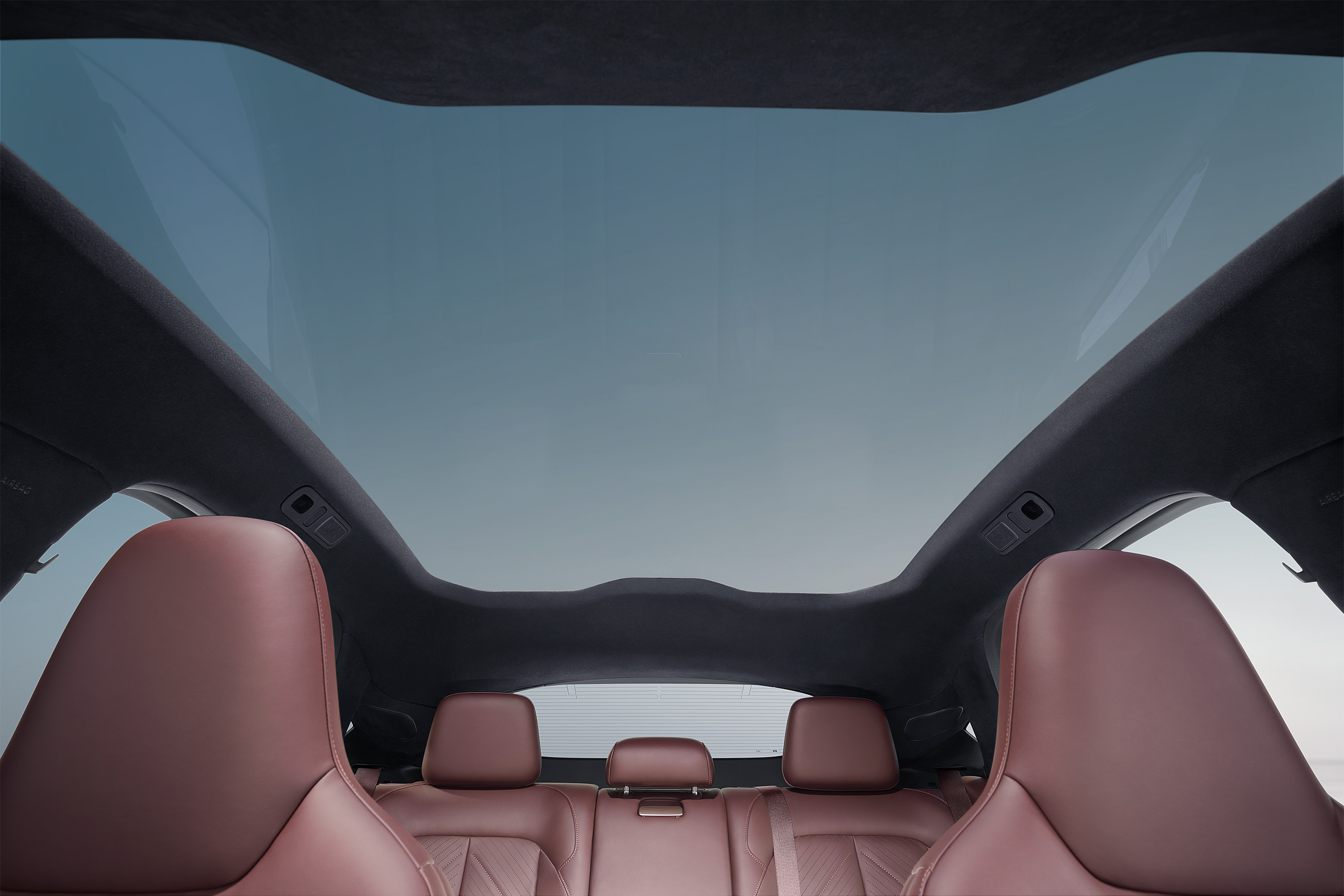
Second, EC7 introduces three new interior colors: “Cocoa Brown,” “Gorgory Gray,” and “Coral Red.” The metal decoration strip on the EC7 console now matches the interior color system, achieving a more consistent color tone.
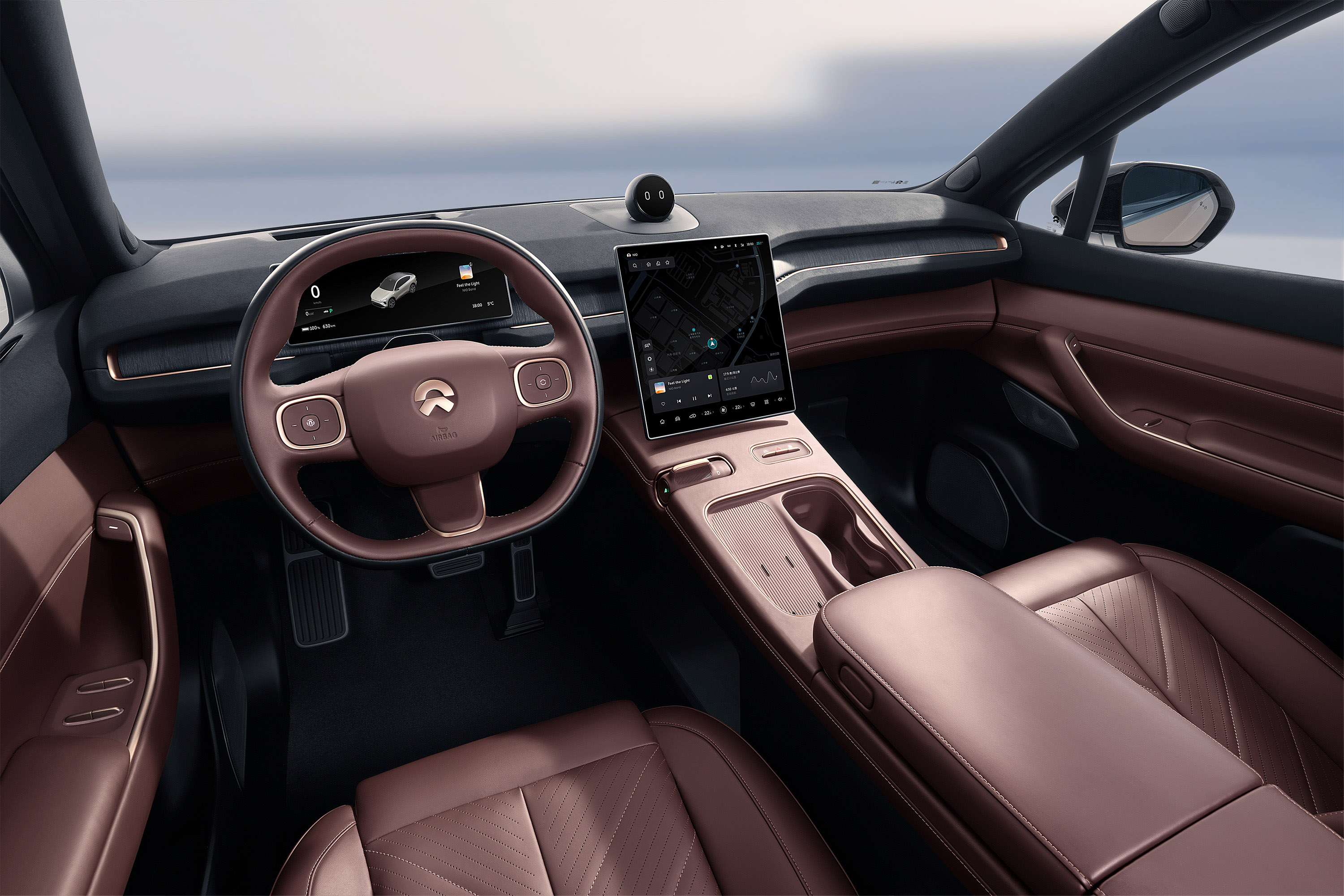
Third, the redesigned and integrated sports seats on the EC7 feature an exclusive EC texture, and NIO may make adjustments to interior details based on their ES, EC, and ET series for future car models.
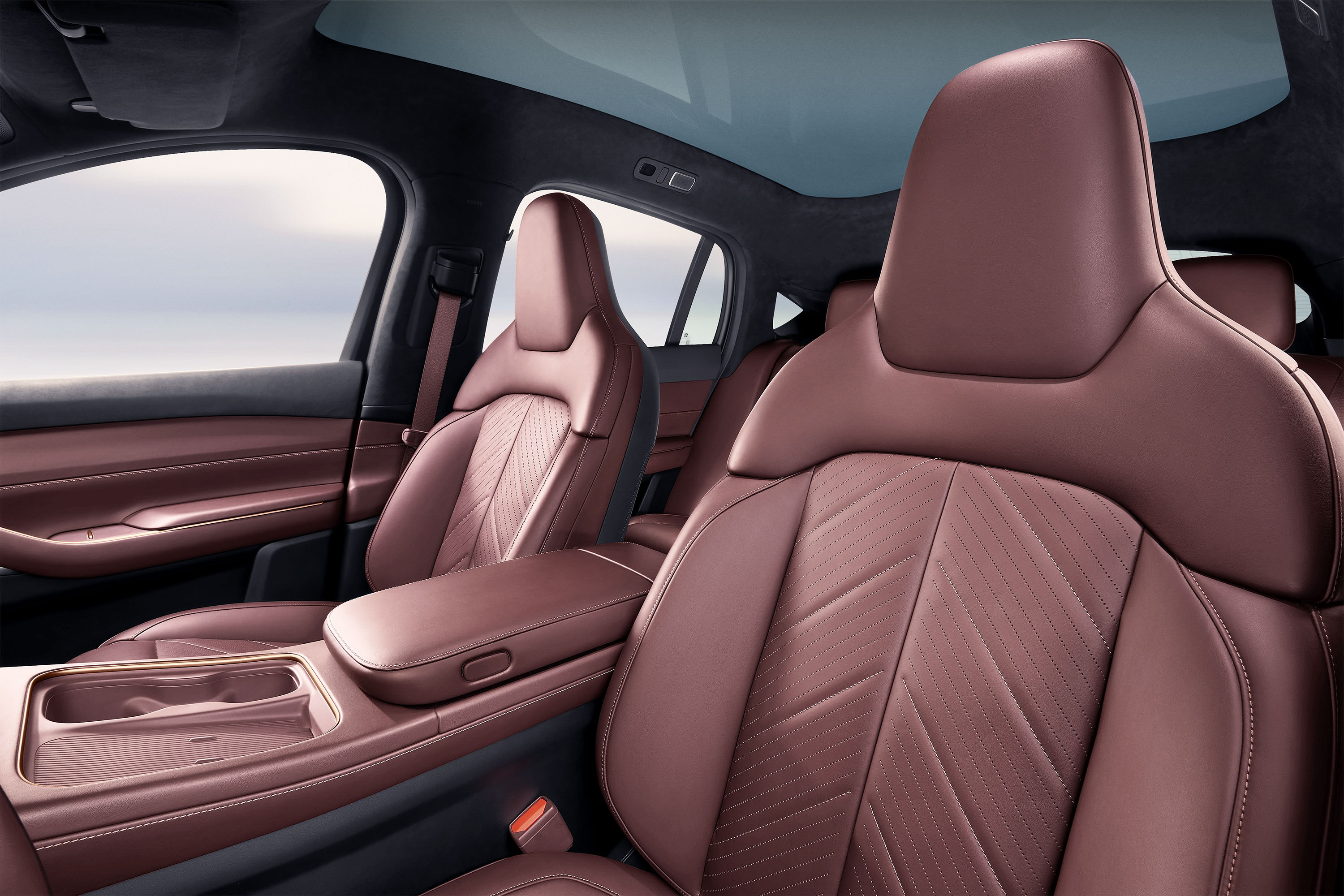
Fourth, the queen’s passenger seat has been upgraded, increasing the area of the leg rest and adding heating functions. After optimizing the structure, it will not come into contact with the passenger’s lower leg when stowed away. Through the buttons on the side of the seat, the seat can be fully reclined with just one click.
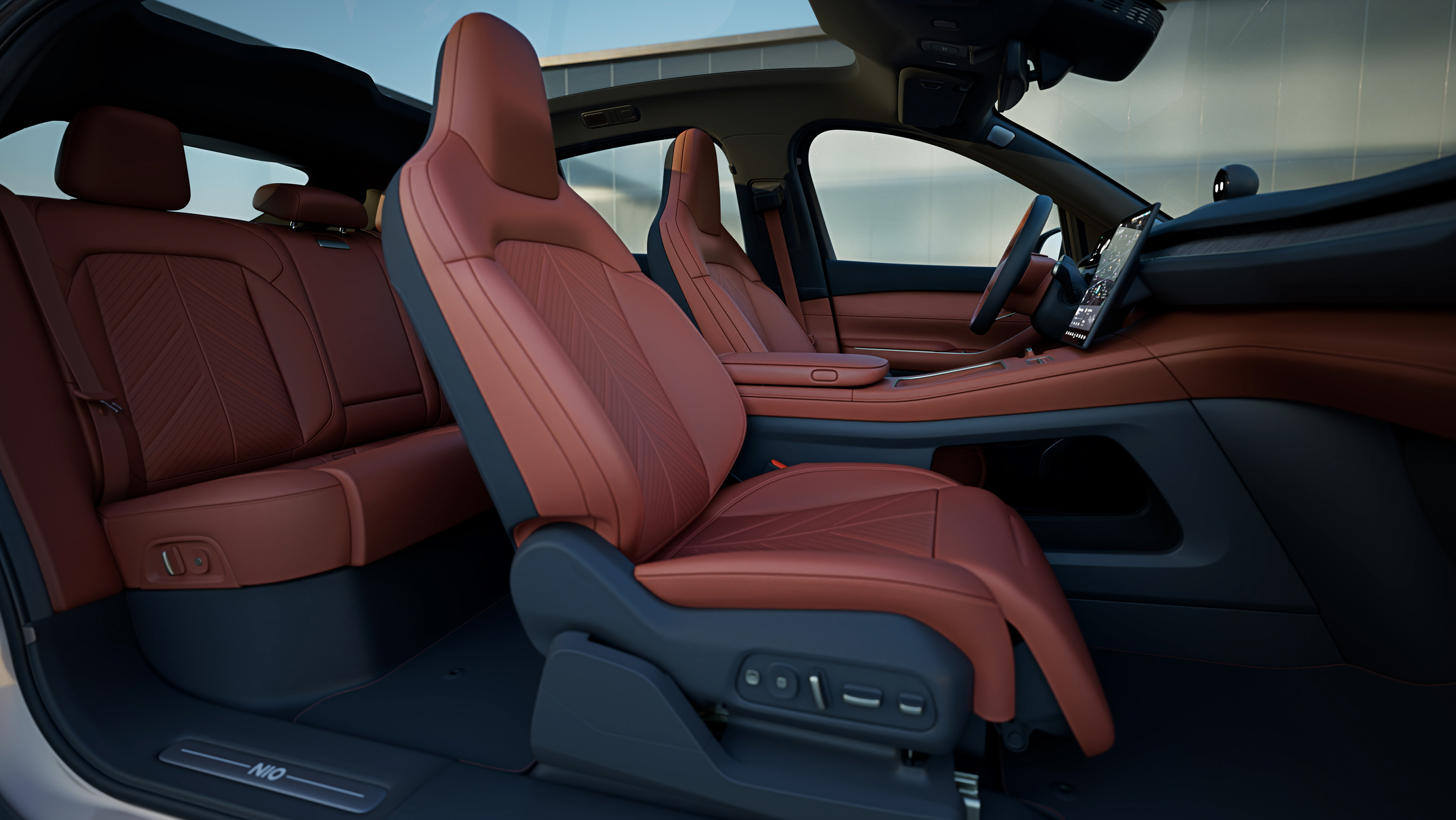 Being able to lie flat in an EC7 is definitely a winner in life.
Being able to lie flat in an EC7 is definitely a winner in life.
The power of new cars on the NT 2.0 platform is always the least of our concerns. The power configuration of the EC7 is still the familiar 300 kW induction motor + 180 kW permanent magnet motor combination, and its 0-100 km/h acceleration level of 3.8 seconds is 0.1 second faster than the ES7.
The EC7’s entire lineup is equipped with Brembo four-piston calipers as standard, and six-piston calipers are optional. The official zero-to-one hundred braking distance is 33.9 meters.
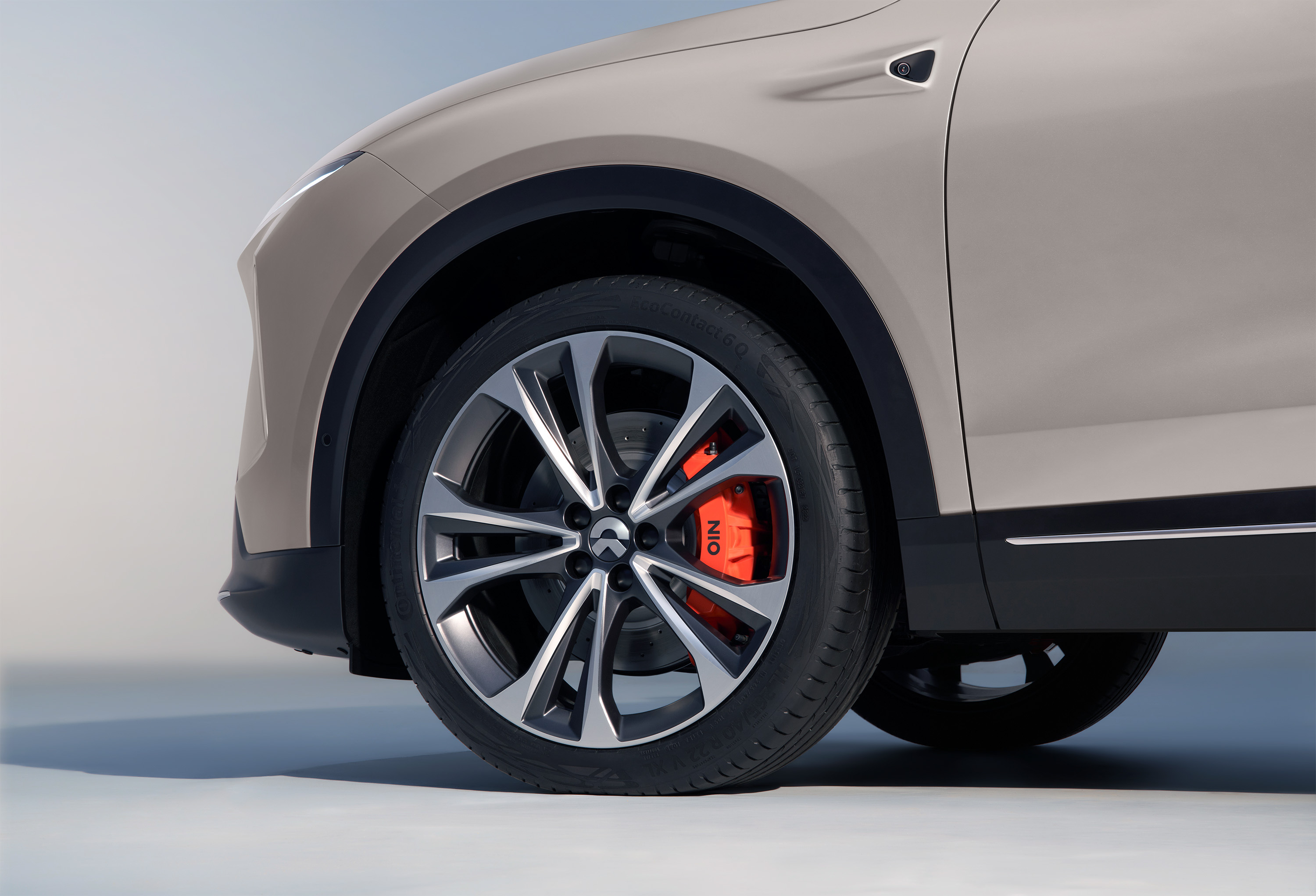

In addition, the EC7 is equipped with air suspension as standard across the entire lineup and has a front-to-rear axle load ratio of 50. We have already experienced the greatly improved driving experience on the ES7, and we believe that as a coupe SUV with a stronger sports performance, the EC7 will not disappoint us.
Second-generation platform ES8, can it still succeed?
The all-new NT 2.0 platform ES8 is divided into two versions through the layout of the cockpit, which can be understood as “ordinary 6-seater version” and “executive 6-seater version”, with the following prices:
-
75 kWh ordinary version priced at 528,000 yuan, discounted to 458,000 yuan after BaaS, monthly rental fee of 980 yuan;
-
75 kWh executive version priced at 548,000 yuan, discounted to 478,000 yuan after BaaS, monthly rental fee of 980 yuan;
-
100 kWh ordinary version priced at 586,000 yuan, discounted to 458,000 yuan after BaaS, monthly rental fee of 1,680 yuan;
-
100 kWh executive version priced at 606,000 yuan, discounted to 478,000 yuan after BaaS, monthly rental fee of 1,680 yuan;
-
Signature edition priced at 638,000 yuan, discounted to 510,000 yuan after Baas, monthly rental fee of 1,680 yuan.


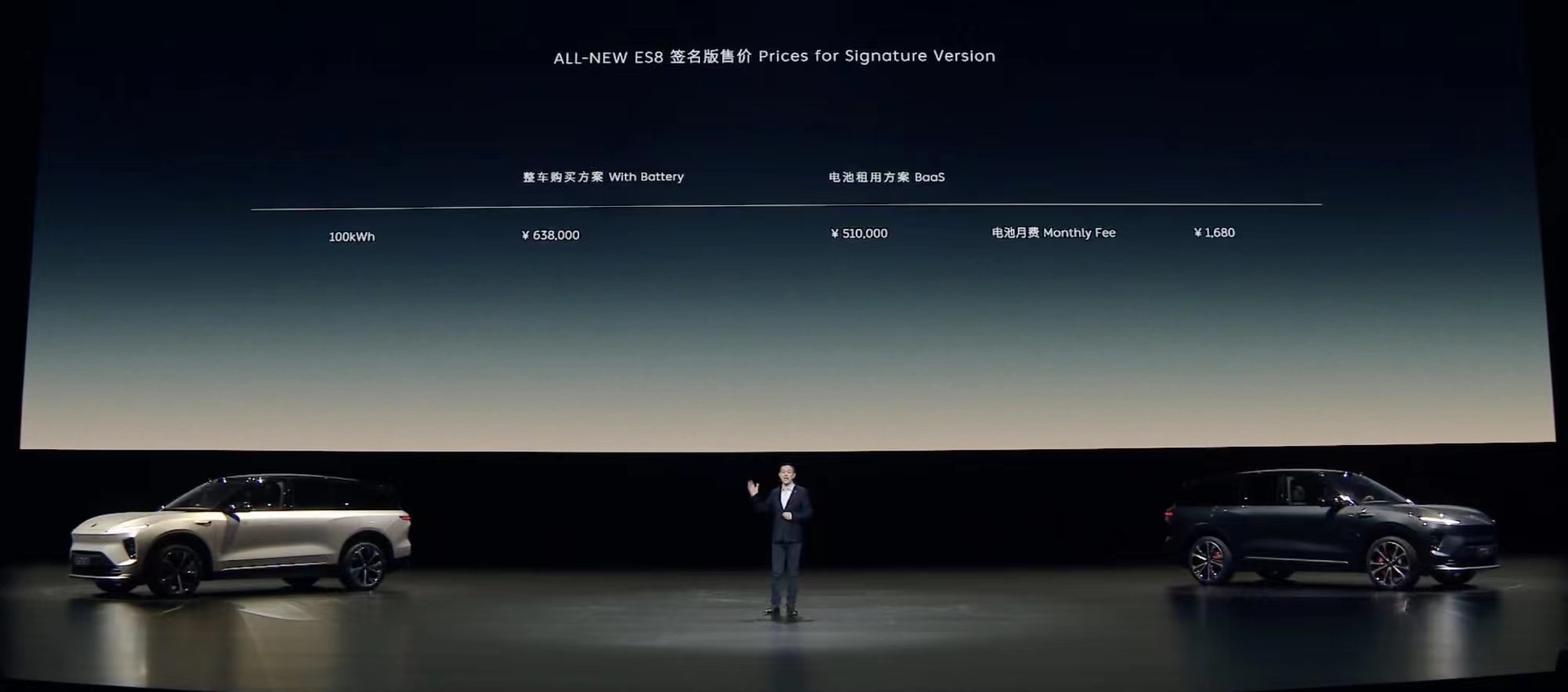
In terms of motor configuration, the new ES8 is consistent with the EC7, with front and rear dual motors totaling 480 kW, enabling this big guy to complete 0-100 km/h acceleration in 4.1 seconds. In terms of battery pack configuration, the new ES8 is the same as other models, with the three versions having the following range:
- 75 kWh version CLTC range of 465 km;
- 100 kWh version CLTC range of 605 km;
- 150 kWh version CLTC range of 900 km.
Believe me, the actual ES8 is more elegant than the photos. If the EC7 is “one of the most beautiful coupe SUVs”, then the ES8 is undoubtedly “one of the most elegant full-size SUVs”. The addition of “one of” is to avoid being pedantic. But when the actual car was displayed at the press conference, everyone was still amazed.
The 2023 annual color “Dawn Gold” is more elegant and refined than “Champagne Gold”, and not at all greasy. At the same time, the ES8 also has an exclusive color “Starry Green”, which is lighter than dark green. Both colors are in the category of very high quality.

In terms of exterior dimensions, the new ES8 is 5,099 mm in length, 1,989 mm in width, and 1,750 mm in height, with a wheelbase of 3,070 mm. Compared to the old ES8, the length has increased by 77 mm, the width has increased by 27 mm, the height has decreased by 6 mm, and the wheelbase has increased by 60 mm. Compared horizontally with the L9, the wheelbase of the new ES8 is 35 mm smaller than that of the L9. They are basically at the same level.
 Regarding the appearance of the new ES8, the biggest feature, apart from the newly added lookout tower sensor, is “subtracting”. In the trend of various electric car companies piling up design elements, the new ES8 appears very unique.
Regarding the appearance of the new ES8, the biggest feature, apart from the newly added lookout tower sensor, is “subtracting”. In the trend of various electric car companies piling up design elements, the new ES8 appears very unique.
From the front, the simplified X-Bar is subtracting. Some may think that the new ES8’s front is not as powerful as the old ES8, but NIO’s design never focuses on just one part. Since the design language of the entire NT 2.0 platform has become concise and powerful, keeping a highly aggressive front grille alone would be out of place.
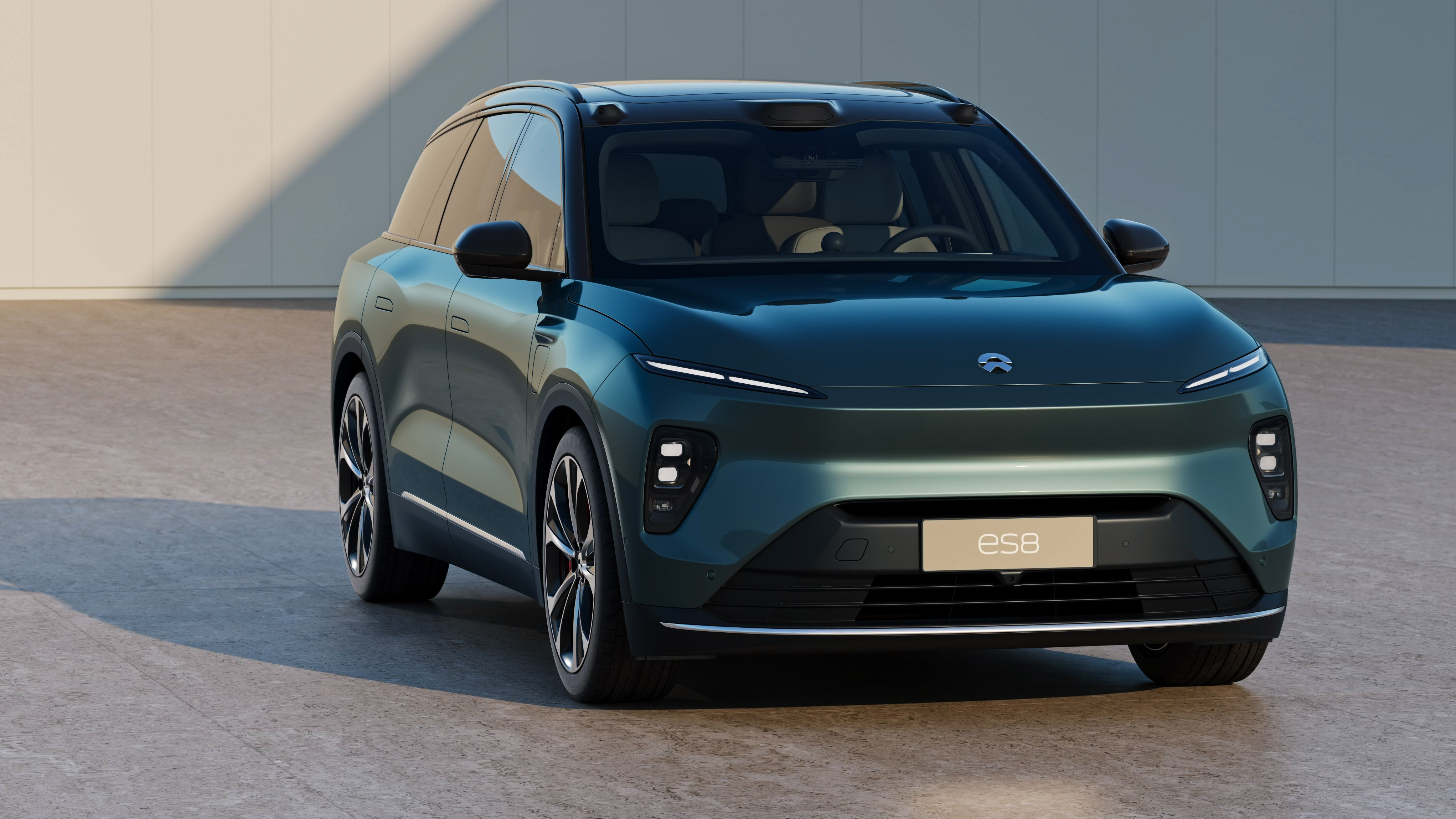
The Double-Dash daytime running lights have become NIO’s signature design style and have also led everyone into the “squint” era. In terms of lighting technology, the ADB adaptive headlights fused with the sensor mentioned above are also equipped on the ES8.
From the side view, the new ES8 also becomes more concise by “subtracting”: the flush door with flat side windows commonly featured on luxury cars such as Land Rover simply outline the sturdy and slender body of a full-size SUV; the floating roof is even simpler and purer, with the decoration bar smoked black and even the roof luggage rack made with high-gloss black treatment, making the overall visual center closer to the lower part; the turn signal is hidden in the PMMA organic glass shell, and the light source cannot be seen when the turn signal is not on.
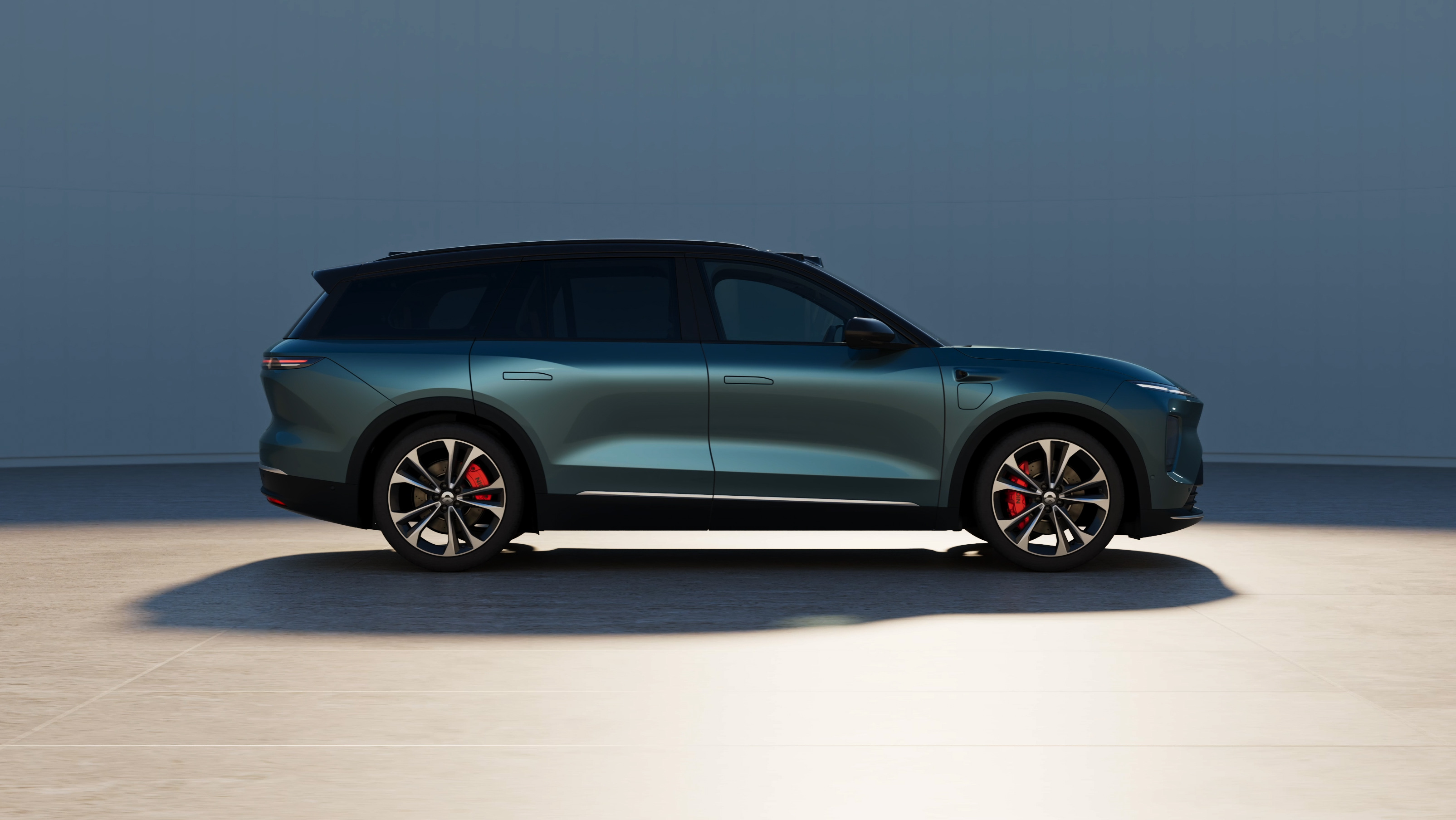
You may have also noticed that on the EC7 and ES8, the lateral sensors have been moved to the fenders, and the wheel arches have also changed from rectangles to arcs. In future models, we are likely to see this change passed down.
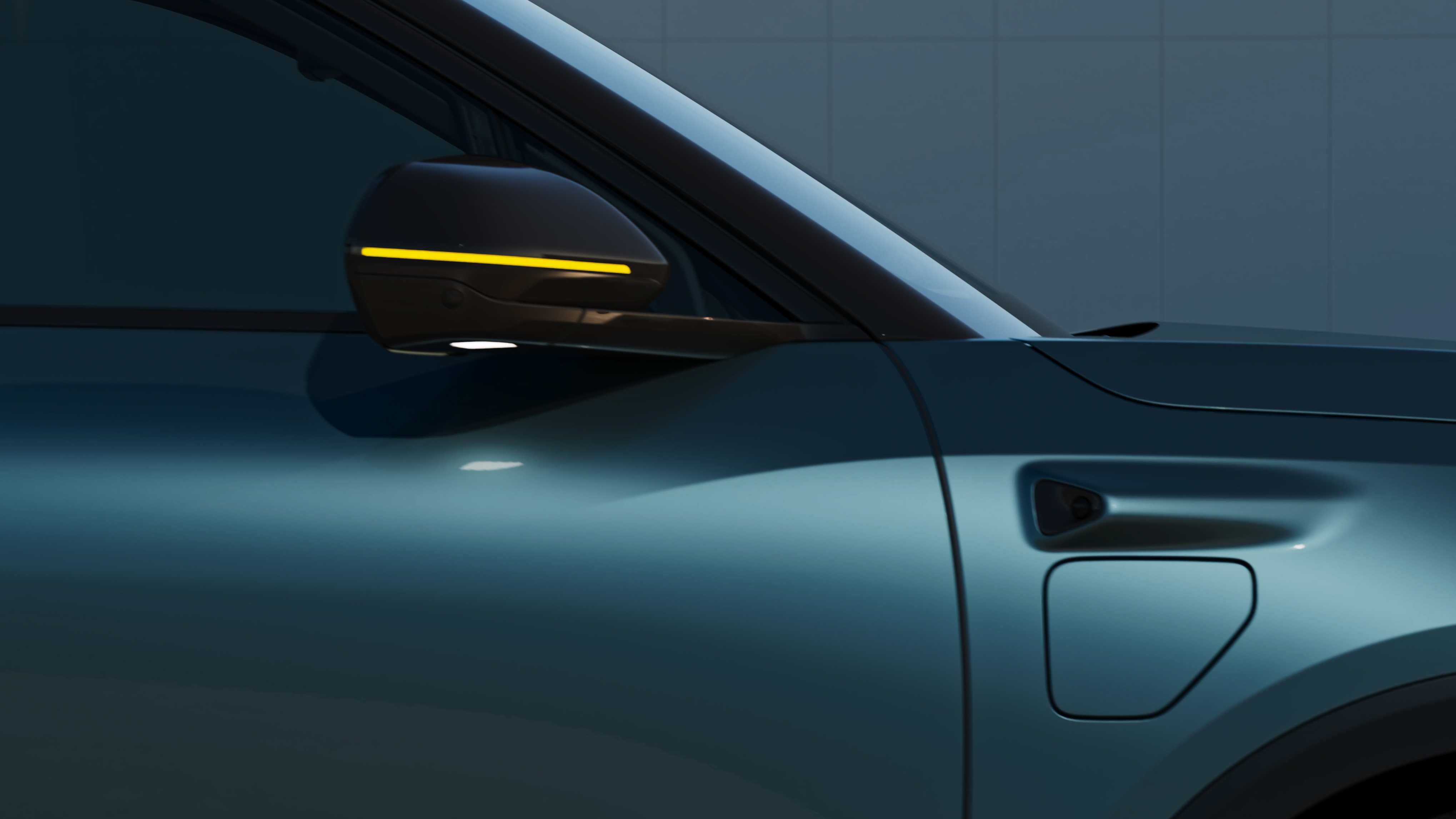 However, for a full-size SUV over 5 meters, the charging port at the front means that it is necessary to park the car to charge it, which is not very convenient for some consumers. But if there is a home charging station and an extension cable, reverse parking for charging in the garage is still feasible. Since the ET series has been relocated to the rear, it is hoped that the ES and EC series will follow suit on the 3.0 platform.
However, for a full-size SUV over 5 meters, the charging port at the front means that it is necessary to park the car to charge it, which is not very convenient for some consumers. But if there is a home charging station and an extension cable, reverse parking for charging in the garage is still feasible. Since the ET series has been relocated to the rear, it is hoped that the ES and EC series will follow suit on the 3.0 platform.
The taillights of the new ES8 are similar to those of the EC7, with a sharp and sleek design that starts in the middle and widens at both ends. The hidden design of the rear wiper is also adopted. While ensuring functionality, the new ES8 avoids excessive stacking of design elements and strives for simplicity.


In terms of the interior, NIO provides 5 interior color schemes for the ES8: “Dai Yun Mountain,” “Qiao Gu Li Grey,” “Tortoiseshell Brown,” “Yun Di Bai,” and “Yun Sen Green.”
The center console of the new ES8 is similar in style to that of the ES7 and EC7: it is layered and elegant, but not overly complex, due to the use of multiple materials and metal trim. The steering wheel is a two-spoke design similar to that of the ET7. The HUD area of the new ES8 has also been increased to 16.3 inches. With the redesigned UI, it can display information such as maps, visualized driving assistance, speed, and gear position.

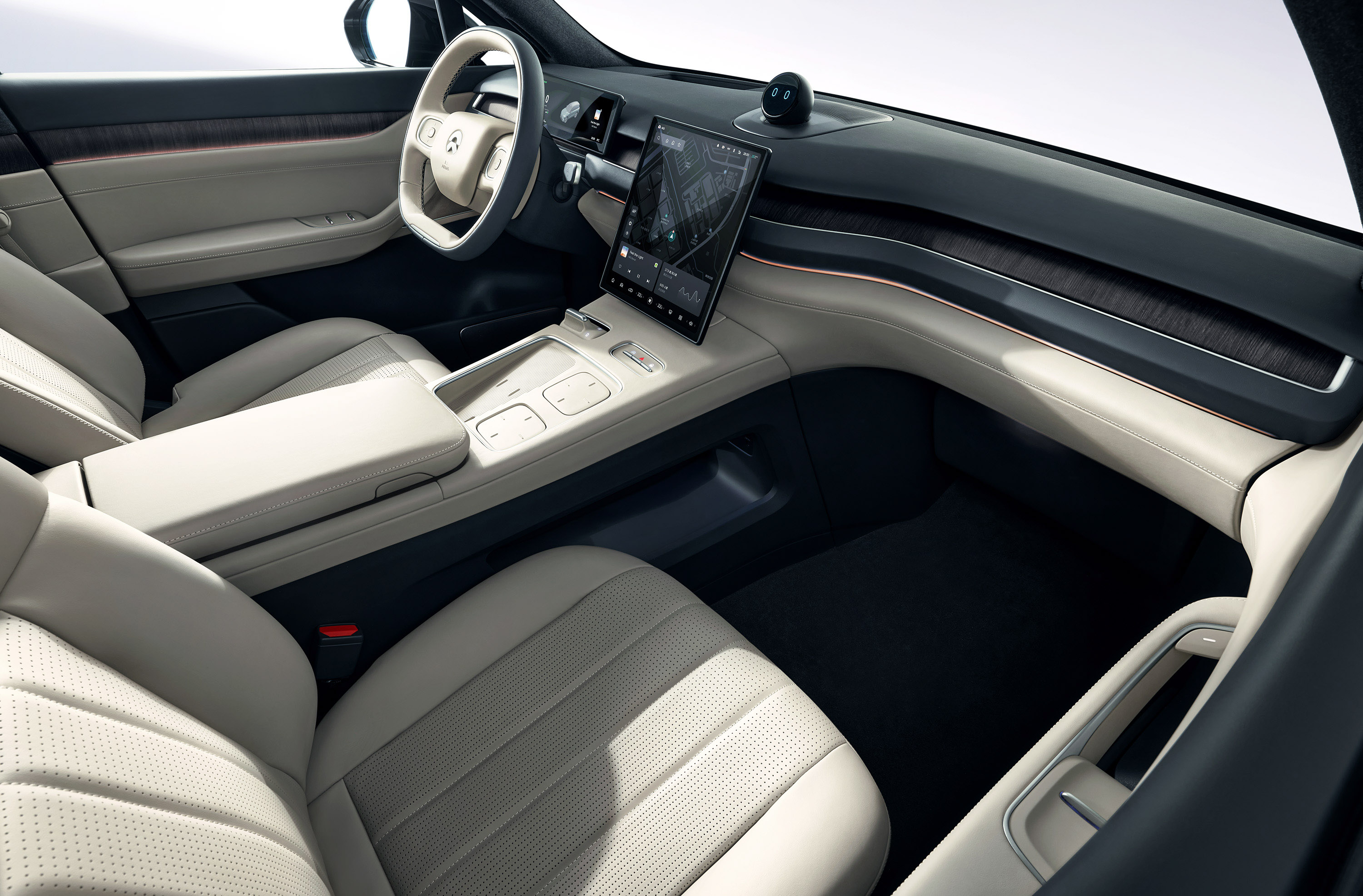 Queen’s co-pilot has also been upgraded like the EC7: it can achieve a tilting angle of double 120 degrees, and the back end of the seat cushion can be raised. In this zero-gravity posture, the passenger in the co-pilot’s seat will also be more comfortable.
Queen’s co-pilot has also been upgraded like the EC7: it can achieve a tilting angle of double 120 degrees, and the back end of the seat cushion can be raised. In this zero-gravity posture, the passenger in the co-pilot’s seat will also be more comfortable.
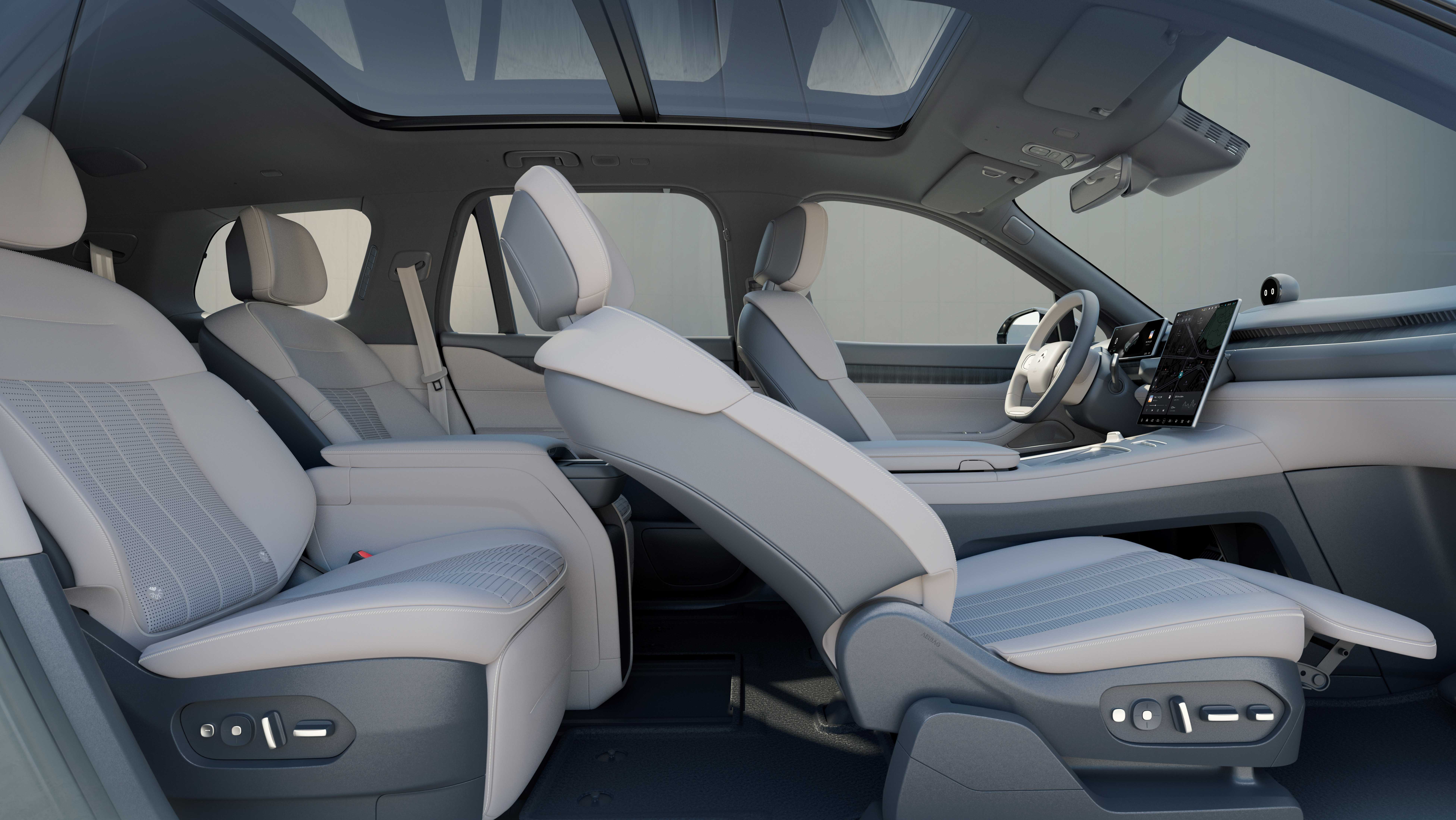

The new ES8 only provides a 6-seat layout, and the highlight is definitely the performance of the second and third rows. For the second row, the new ES8 provides two versions of layout: “Comfort Seat Layout” and “Executive Seat Layout”.
In the “Comfort Seat Layout”, there is a 170mm aisle in the middle of the second row for the convenience of the third-row passengers. Although the seat width is slightly smaller than the “Executive Version”, this version of ES8 still uses large armrests to meet the needs of rear passengers for comfort as much as possible.

The third row of the new ES8 also offers electric adjustable functionality, and provides independent cup holders and Type-C interfaces. Together with the 6-audio zone voice recognition, the basic comfort of the third row can be satisfied.

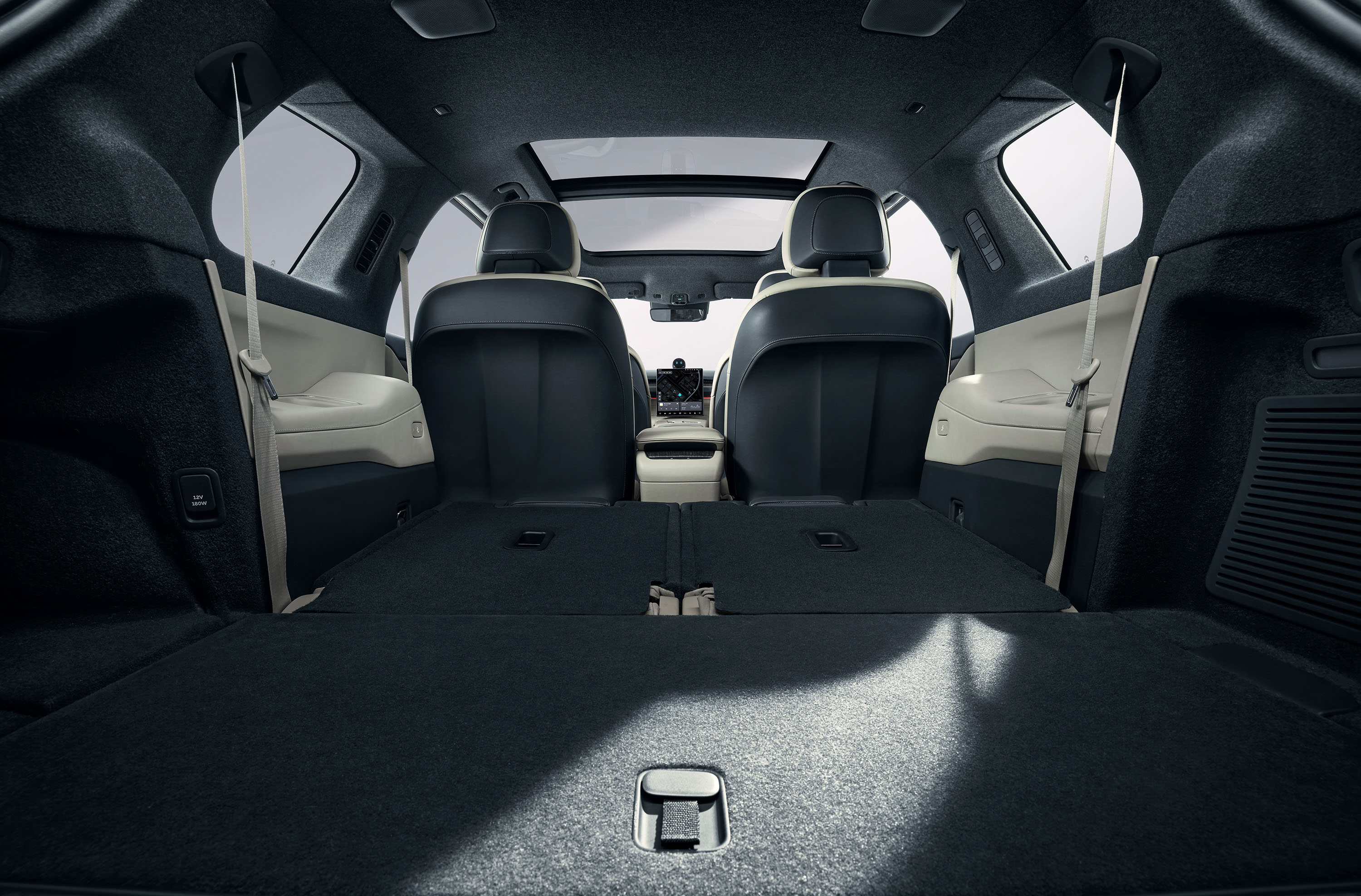 However, if you are a potential customer of ES8 and mainly use the car with four passengers, it is recommended to choose the “Executive Seat Layout”. After installation, the front seat will be transformed into a large “single sofa” with a width of 550mm, and the rear aisle will also become an “Executive Center Console” with a complete leather covering. The “Executive Center Console” is divided into two zones: the upper “digital layer” provides 3 wireless charging positions for mobile phones; the lower layer provides a huge storage space.
However, if you are a potential customer of ES8 and mainly use the car with four passengers, it is recommended to choose the “Executive Seat Layout”. After installation, the front seat will be transformed into a large “single sofa” with a width of 550mm, and the rear aisle will also become an “Executive Center Console” with a complete leather covering. The “Executive Center Console” is divided into two zones: the upper “digital layer” provides 3 wireless charging positions for mobile phones; the lower layer provides a huge storage space.
The highlight is that the storage space can be equipped with a 5L refrigerator. To quantify it, it can hold approximately 8 cans of Coke or 4 bottles of mineral water. At the same time, the refrigerator can provide a cooling or heating range of 0-50℃, which can be controlled by the car machine, the rear control screen or the APP.
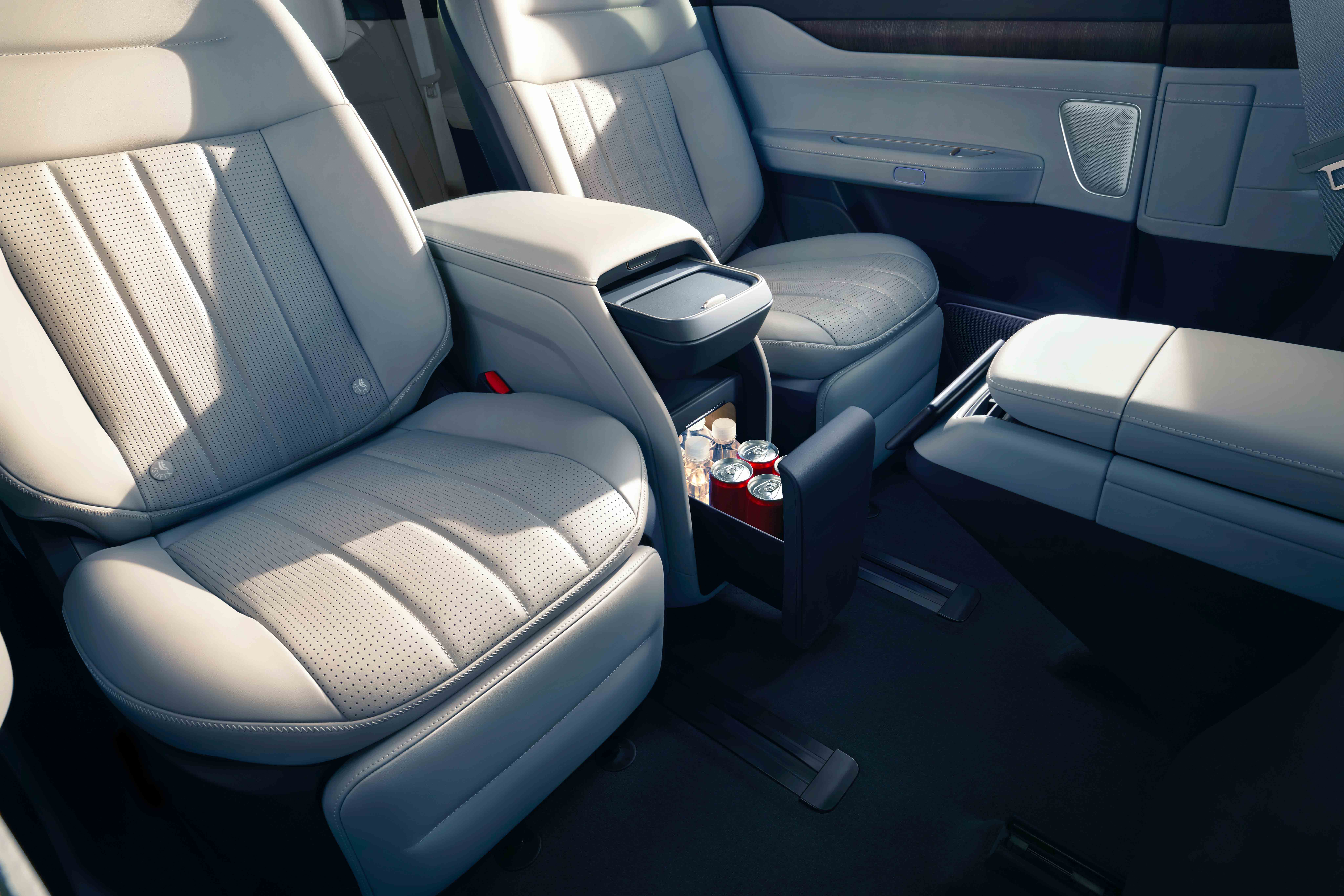
After all, NIO defines its cabin as the “second living room”, so it is not surprising to have a refrigerator. Under the concept of the “second living room,” the two independent and spacious rear seats of the ES8 can achieve 14-way adjustment and can also be easily turned into a “comfort mode” with a 135° semi-reclining function.

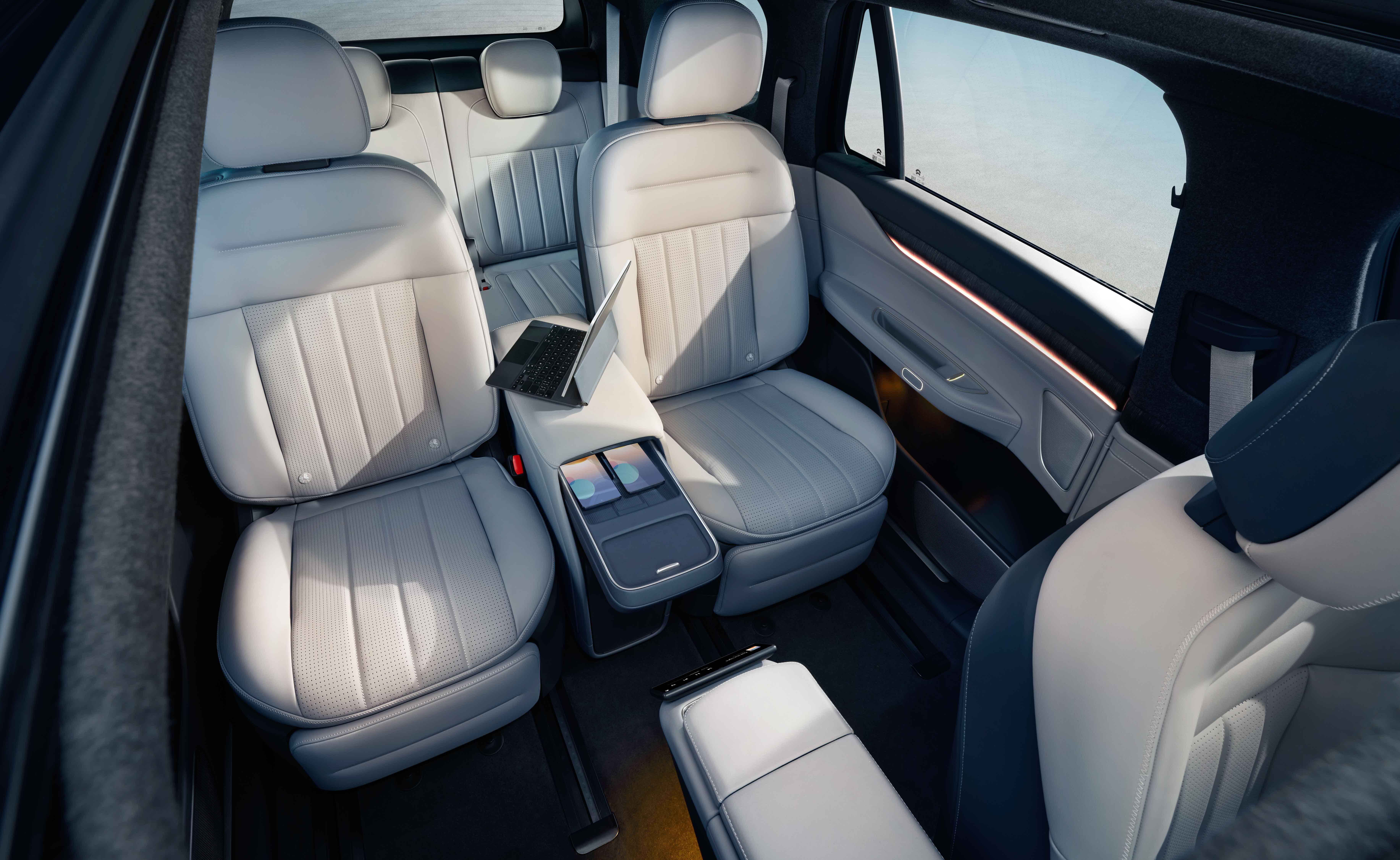
Li Bin also revealed some information about NIO Phone, which will be launched next year: NIO Phone can act as the control center of ES8 to control the functions of the entire vehicle. Although there is not much information disclosed, you can guess what the NIO Phone will look like based on the above picture.Different from setting up rear screens, NIO chose to increase cabin playability through AR/VR technology. The new ES8 has full native support for AR/VR video output and anti-shake function. With the standard N-Box host, up to 4 people can use PanoCinema to watch videos simultaneously.
NIO has also been developing resources for PanoCinema, such as the World Cup and this year’s NIO Day. Imagine, with the new ES8’s enhanced 7.1.4 panoramic audio system with power doubled to over 2,000 W and AR/VR devices, how would it feel to lie in the backseat and immerse yourself in a live concert?
I’m really looking forward to it.
To be honest, the second row of seats in NIO’s other SUVs is not particularly comfortable. But the new ES8 may have the most extreme second row of seats in NIO’s lineup. For consumers who are looking to purchase a NIO for executive reception or those who have high demands for their backseat experience, this is the only option for them.
This is precisely where the difference lies between the new ES8 and ES7.
Third Generation Battery Swap Station & Navigation Battery Swap
“Supercharged” Battery Swap Station and “Superfast” Chargers

After talking about the new vehicles updated to the 2.0 platform, the focus is now on the technological advancement of charging and swapping batteries. Let me ask you a question:
Have you ever seen a battery swap station equipped with LiDAR sensors and Orin X chips?
NIO’s third generation battery swap station is equipped with two LiDAR sensors and two Orin X chips, with a total of 508 TOPS. The improvement in processing power and perception brings two benefits: firstly, it improves the intelligence level of the station-side battery swap, and secondly, it further enhances the capabilities of NIO’s “Energy Cloud” system.
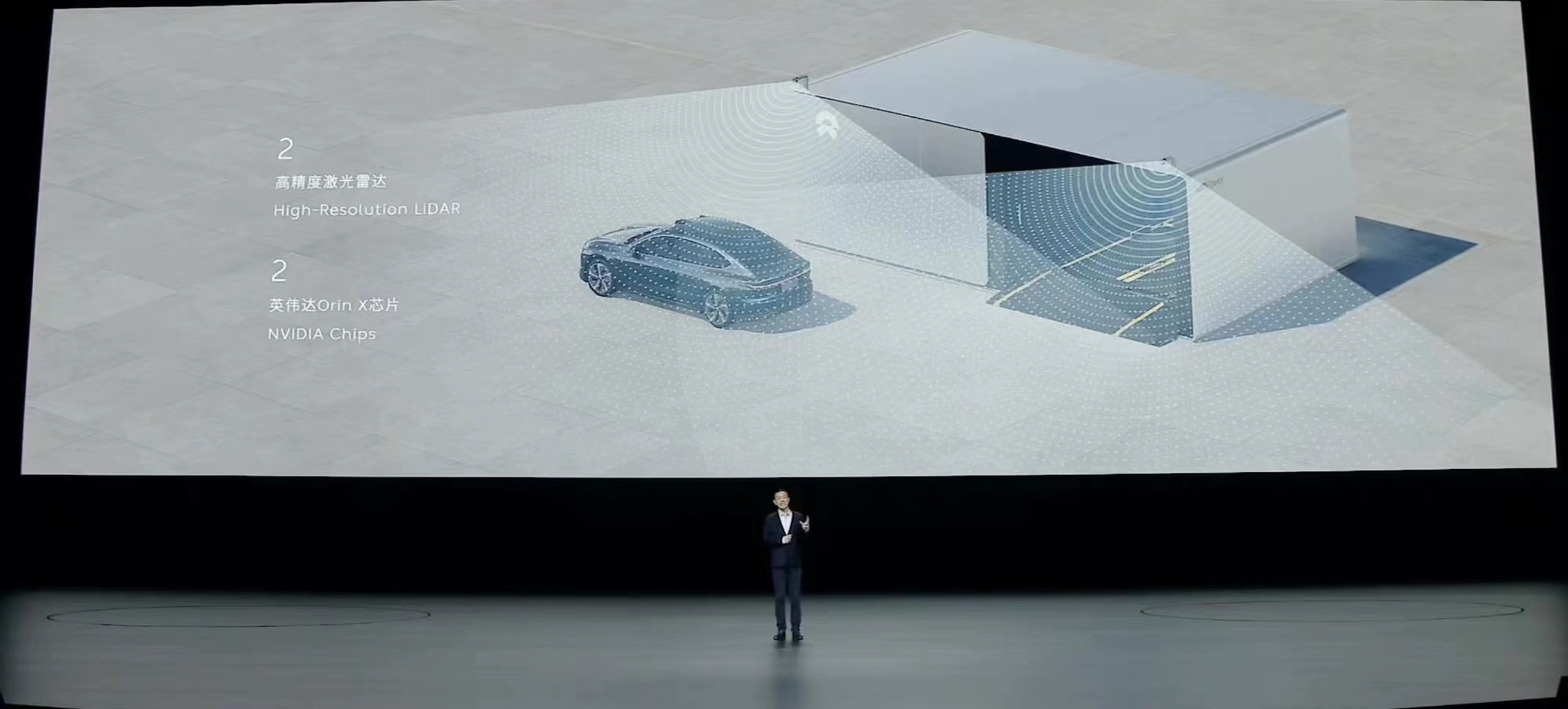
Microscopically speaking, the improvement in perception allows the third-generation battery swap station to achieve “summoning swapping” functionality, allowing owners to automatically swap their batteries using a mobile app without having to do it on the vehicle itself. Macroscopically speaking, the improvement in processing power allows NIO to work more closely with the national grid to achieve “valley-fill” peaks and, through the data from “vehicles”, “charging stations” and “battery swap stations”, NIO’s energy cloud can achieve more intelligent site selection and operation.And in terms of basic capabilities, the third-generation battery swap station can accommodate 21 batteries, far exceeding the 13 batteries of the second generation. The daily service frequency of the third-generation station can reach 408 times, a 30% increase over the second generation station.


At the 2017 NIO Day, NIO released the first-generation battery swap station. At that time, people had more doubts about “battery swapping”, whether it was the prospects for development or the subsequent construction costs of battery swap stations. Many believed that it was an unrealistic thing.
Today, NIO has built 1,286 battery swap stations in China. Two-thirds of NIO users’ residences or offices are within 3 kilometers of a battery swap station. NIO has also completed the construction of a high-speed battery swap network in five vertical and three horizontal corridors of the four major metropolitan areas.
A journey of a thousand miles begins with a single step. NIO Power has been building its moat for 4 years, and its unique advantages will be further demonstrated in the new brand, Alps.
With the scarcity of capacitors as a resource, the deployment of battery swapping system also provides a soil for NIO’s 500 kW supercharging pile. The maximum power of the supercharging pile released by NIO this time is 500 kW, and the maximum current is 660 A.

Bin Ge gave a data: ET7 with a 100 kWh battery can add 400 km of CLTC range with a 20-minute charge.

If the supercharging pile is deployed following the battery swap station, then in the case of queuing, the energy replenishment speed of the 500 kW supercharger may even exceed that of battery swapping. This will also reduce the competition for some battery swap resources.
Leading the way in battery swapping, is this the demo that leads the way in urban areas?At NIO Day, Li Bin showed us a demonstration video of NOP+ achieving autonomous navigation and battery exchange at a highway service area. While driving on the highway, after setting up the navigation, the vehicle will automatically plan and go to the battery exchange station, and leave on its own after the exchange is completed.
This also means that if you are driving a NIO for a long journey, you no longer need to take over the vehicle to exchange the battery even when entering the service area.
As we all know, for highway service areas, there are often complex landmark lines, crowded traffic, and constantly changing traffic conditions. The difficulty of achieving automatic battery exchange in this micro-scenario can be imagined. Moreover, the high-precision maps provided by various companies do not cover the scenarios in service areas.
We know that from next year, top EV startups will switch from a map-oriented approach to a BEV perception algorithm. From the video demonstration, we can see that the vehicle is modeling and planning the driving route in real-time. In this scenario, battery exchange with autonomous navigation can almost be regarded as a demo version of urban autonomous driving assistance.
Li Bin said that this feature will be gradually implemented starting from the first half of 2023. I’m very curious and excited to see how this feature will perform after it is implemented.
Blood boiled, now let’s hit the road
In this special period, the cheers in the NIO Day venue were still mixed with intermittent coughs. As Li Ronghao sang “Li Bai” as the finale, I couldn’t help but feel sentimental.
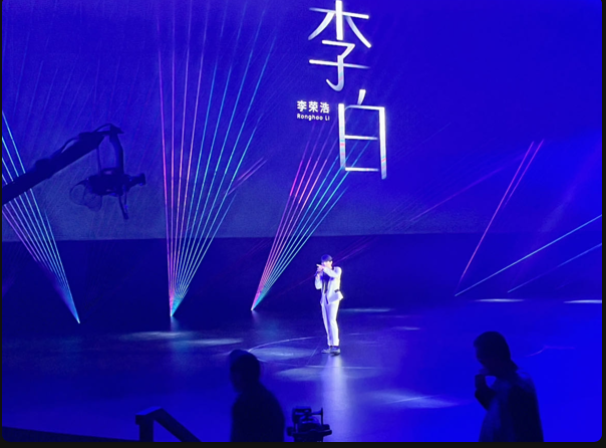
I have already forgotten when was the last time I sat in such a large venue and witnessed a grand event. Being able to feel the excitement and surprise of a new car unveiling in front of me is undoubtedly rare and exciting.
But after the excitement, we and NIO still have to continue on the road. Qin Lihong said earlier, “The ES8’s iteration into the second generation is NIO’s all-around practice in product innovation.”
We can also see some clues from the pricing of the flagship product. The price of the new ES8 is almost the same as that of the old version, but the design and thinking of the appearance and interior, as well as the significant improvement in intelligent driving, are a miniature representation of NIO’s progress in recent years. The ES8 used to be NIO’s savior, saving the brand from the verge of survival. Now, the new ES8 is a sign that NIO has moved beyond the ICU and embarked on a marathon run.“`

Although the expected Alpines, NIO phones, and NAD did not appear at this NIO Day, NIO’s progress in services, energy replenishment, lifestyle, etc. has changed from being doubted to a rising trend with significant scale.
NIO Day has ended, but NIO’s next 8 years have just begun.
“`
This article is a translation by ChatGPT of a Chinese report from 42HOW. If you have any questions about it, please email bd@42how.com.
